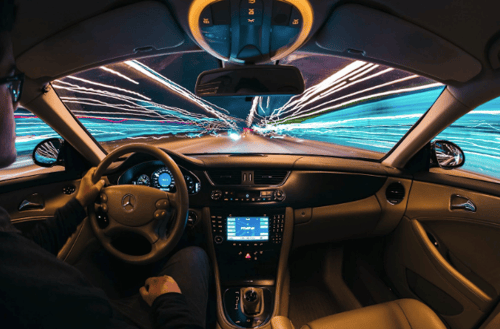Across industries, digital transformation has become an imperative, and the automotive industry is no exception. From design to manufacturing to shipping to sales, every aspect of the automotive industry is being digitized, optimized, and re-imagined. Nowhere is this more evident than in the types of vehicles we see automakers investing in. R&D, manufacturing, and production of these three types of vehicles have skyrocketed in recent years—and the numbers will only continue to increase. Simply put, things are changing due to digital transformation in the automotive industry.
Electric Vehicles
Electric vehicles (or EV) have been a topic of discussion for some time now. GM produced their first electric vehicle in 1998 and Tesla produced their first vehicle, the electric Roadster, in 2008. For much of their existence, however, electric vehicles have been prohibitively expensive; most environmentally-conscious consumers found hybrid vehicles to be their most realistic option. Charging stations were hard to come by and many mechanics weren’t familiar with how EV diverge from conventionally powered automobiles.
Digital transformation in the automotive industry has encouraged an EV boom over the past several years. Major manufacturers have plans in place to produce exclusively electric vehicles within the decade. Improvements in technology have made EV more affordable and accessible than ever. We can only expect to see EV rise further in prominence and popularity.
Self-Driving Vehicles
Digital transformation within the automotive industry is perhaps most blatantly evident in self-driving vehicles. Automakers have invested immense resources into researching and developing self-driving cars, trucks, and SUVs—and it’s paid off, as we’re now witnessing the beginnings of self-driving vehicles entering the mainstream.
While it may be a bit longer before individuals own or rely on self-driving vehicles, the same can’t be said for companies. Many industries that are adjacent to the automotive industry are investing in self-driving vehicle technology. Adjacent industries such as ridesharing and long-haul trucking will be especially affected. Some estimates predict that self-driving trucks will replace as many as 500,000 jobs.
Connected Vehicles
A connected car is able to send and receive communications with other external systems, be that another car or something else entirely. This means they can send and receive data, download software updates, connect with other devices, or provide WiFi connectivity to passengers. For the average driver, this means being able to play Spotify directly from the car, without connecting your phone, or making calls on WiFi even in areas without cell service.
Connected vehicles also have safety and navigation applications. Systems like OnStar and built-in GPS are examples of the applications of connectivity in cars. Digital transformation is further advancing safety applications in particular. Forward collision detection and warnings, blind-spot monitoring, notification of an approaching emergency vehicle, and speeding alerts are all safety features available in connected vehicles.
Lintec Auto
Digital transformation in the automotive industry means that the automotive landscape is changing rapidly and Lintec Auto is prepared to change with it. We’re one of the top global suppliers of automotive adhesives and labels. Contact us today to find out how you can optimize your automotive designs with Lintec Auto.

